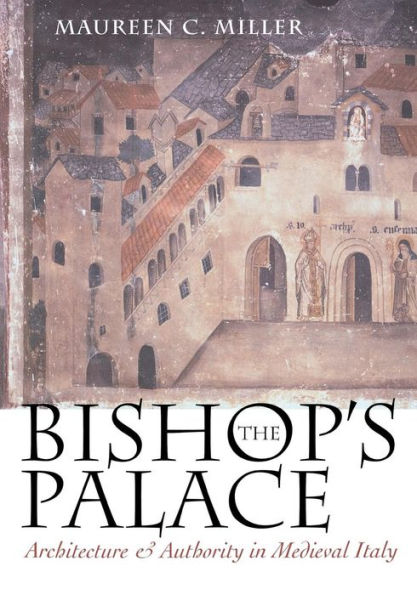Matthew M. Reeve
I was profoundly impressed by this book. Miller handles and synthesizes historical and archaeological evidence... with equal precision, and offers insights that will be valuable to the archaeologist and to the the cultural historian.
Duane J. Osheim
Maureen Miller has walked innumerable cities and mastered some exceedingly difficult historiographical issues. Her explorations of the medieval urban texture is a revelation—the Episcopal palace was not simply the seat of religious administration, it was the locus in which spiritual, social, and political life in the early Italian communes was worked out. This is an exciting and original book.
Julian Gardner
An exhilarating and serious book... Miller has done splendid service in locating the bishops firmly in their palaces... Miller's discussion of the painted decoration of bishops' palaces is exemplary and will become required reading... There is much to ponder on in this courageous and innovative book. It marks a new stage in reading the episcopal slant on the topography of power in the medieval Italian city, and its lessons will surely be broadly applied.
Steven Epstein
I am extremely impressed with this very well-written and engaging book. The subject—the bishop's palace—is a novel one and has proven to be a creative way of looking at some of the main debates in medieval Italian history. Maureen Miller has done impressive research in a number of archives, finding in the process many fresh sources on her subject; the notes and bibliography reveal the work of a meticulous historian who has clearly mastered the subject.
January 2001 Choice
A handsome, generously illustrated volume... All levels.
Gary M. Radke
Maureen Miller is a splendid scholar/teacher and a great storyteller. Skillfully blending a close reading of legal and institutional documents with a keen curiosity about the actual buildings with which they are associated, she brings a thousand years of key buildings and ideas to life.
Mary Stroll
Maureen C. Miller has positioned herself in the midst of two current interests in medieval history: power, and architecture and language. Skillful in both fields, and possessing a magisterial knowledge of archival and printed sources as well as current literature, she has written a book that is required reading for anyone working on central and northern Italy. This study is both analytical and deeply probing and does not hesitate to contest the accepted canon, impelling historians to reconsider positions previously not though to be open to dispute... The power of her arguments, and the elegance of her scholarship command great respect.
Augustine Thompson
Lavishly illustrated with photographs and diagrams, Miller's narrative is vigorous and convincing.... Miller presents us with a striking, perhaps tidy, parallelism between architecture and episcopal power. One might wonder whether, besides imaging power, religious sensibilities, budgetary considerations, and even accident, might also have guided architectural projects, but to this reader Miller's parallels are generally convincing.
Ross Balzaretti
All over Western Europe bishops were once very much more powerful politically than they are now... The choice of the episcopal residence as a subject is undoubtedly a novel way to explore the link between town and biship and this alone lends Maureen Miller's thoroughly researched book true originality.
George Dameron
This significant book is the first history of the medieval episcopal residence in central and northern Italy... It is an impressive work of comparative and interdisciplinary scholarship, and it places the episcopal residence at the center of political and cultural changes within the city before 1300... This book is a major contribution to the literature about medieval urban architecture and the definitive study of the episcopal palace.






